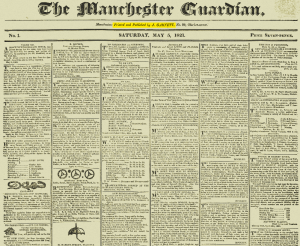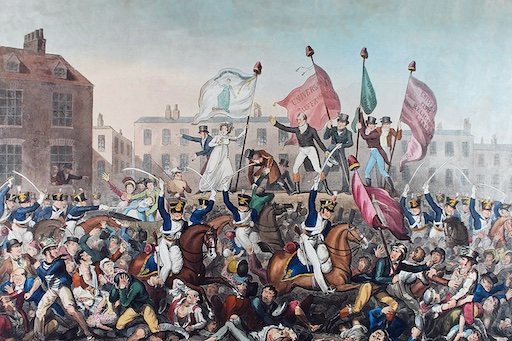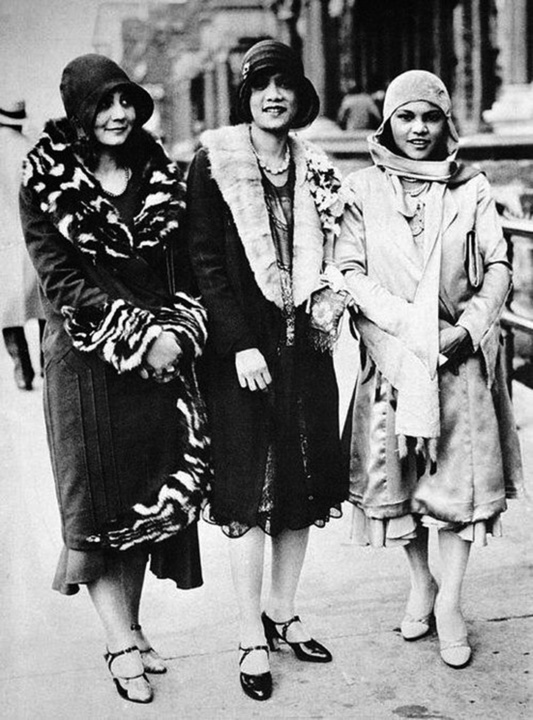5th May 1821: On this day, the publication in Manchester of the first edition of The Manchester Guardian and, on Saint Helena, the death of Napoleon Bonaparte.
Today The Guardian celebrates its 200 year anniversary – no mean feat when one considers the fragile nature of media enterprises, not just in our own time, but the struggles for survival of newspapers and periodicals from their very beginnings.

The Manchester Guardian (as it was called until 1959) was founded by John Edward Taylor in the aftermath of the closure of the Manchester Observer. This more radical publication had been charged with sedition for their role in agitating for parliamentary reform and promotion of meetings on St. Peter’s Field in Manchester, that culminated in a mass gathering on 16th August 1819 during which the cavalry charged into the crowd of thousands of mostly ordinary folk protesting against economic hardship and demanding the rights of greater suffrage and representation.

The massacre would become known as Peterloo, a portmanteau created from the location, St. Peter’s Field, and the Battle of Waterloo that had taken place four years earlier. That battle, which marked the end of the Napoleonic Wars, was also the beginning of trade restrictions and the infamous Corn Laws in Britain that benefitted the gentry and land owners but, by raising the price of food staples, brought hardship to the working classes. Some in attendance in Manchester that day would very well have been there on those Belgian fields and participated in one of Britains greatest military victories. Just is that not.
That on the very same day as the publication of the first edition of The Manchester Guardian, that same French emperor who had been defeated at Waterloo should die (and with his boots on) on a remote island in the middle of the South Atlantic, could hardly have been expected to be reported upon – long as it was before even rudimentary undersea telegraph cable – but the coincidence would surely have later been noticed and remarked upon. [And indeed it was, following a July 14 (just had to be didn’t it!) report from Paris, on July 28, and here it is from the The Guardian archives]
And so it is, two hundred years after his death, Napoleon’s shadow still looms large in the annals of history; he continues to fascinate, for better or worse, and France still struggles to come to terms with a legacy full of contradictions. And The Guardian is still around to tell us about it.
Continue reading

